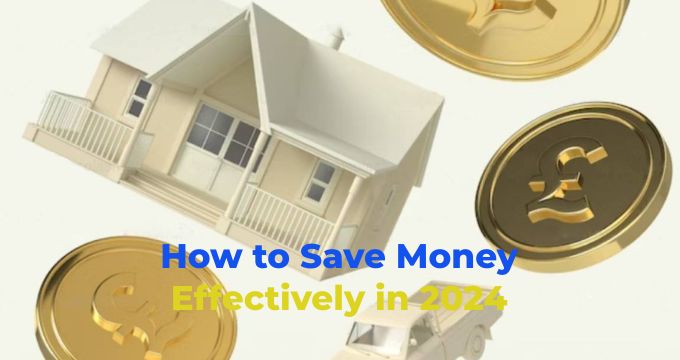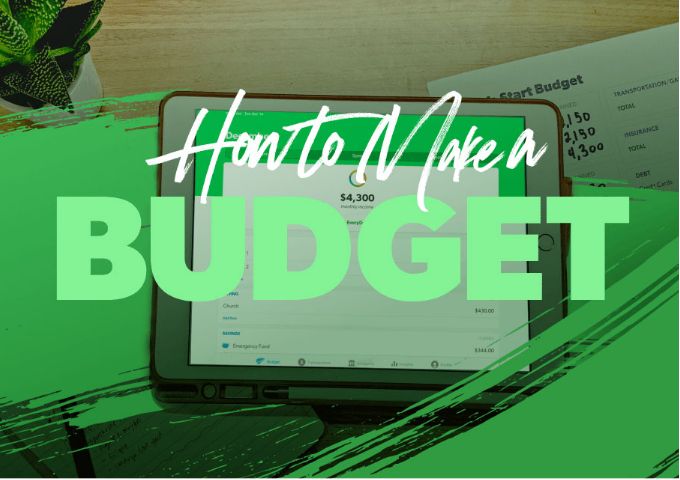Effectively Way to Save Money in 2024 – Financial Independence for Beginners
So, we all know that the cost of living is out of control. When people say you need to save more money, it seems impossible.
But we’re here to show you that it is possible because, on our journey towards Financial Independence and Retiring Early (FIRE), we saved 70% of our income by following the strategies we’ll discuss in this video. We know that if we can do it, you can too!
A Journey to Financial Independence
Hey guys, Zan and Christina from Our Rich Journey. Welcome back to our Financial Independence Retire Early series, where we’re sharing, over the course of four videos, how to achieve financial independence by making more money, saving more money, and investing more money to achieve this ultimate personal finance goal.
If you haven’t watched the first video, make sure to go back and watch it. Also, if you’re not subscribed to our channel, make sure you do that so you don’t miss the rest of the videos in this series. Today, we’re talking about one of the pillars of financial independence: saving more money. If you can focus on aggressively saving, the quicker you can get to financial independence.
The Importance of Saving Aggressively
This is crucial because the average American family has less than $110,000 in savings, and nearly 40% of families can’t cover an unexpected $400 expense without borrowing or using a credit card.
So, when you’re saving 70% of your income like we did, you’re not only building a safety net, you’re also dramatically speeding up your journey to financial independence. Every dollar you save is one step closer to freedom.
Understanding Your Savings Rate
One of the things you’ll often hear us talk about when pursuing financial independence is increasing your savings rate. We use terms like 70% of your income or 50% of your income—this is a percentage calculated to determine how much of your income you are saving.
The higher you can increase this rate, the faster you can achieve your personal finance goals. Your savings rate is simply the percentage of your income that you’re able to save, invest, or use to pay off debt. It’s not just about the money you’re putting into a savings account; it also includes the money you’re using to invest in the stock market, retirement accounts, or, as I said, even paying down debt.
Calculating Your Savings Rate
To calculate your savings rate, take the amount you’re saving, investing, and using to pay down debt, and divide it by your total income. So, if you are saving $35,000 out of an income of $50,000, your savings rate is 70%. This is the key to reaching FIRE faster—the higher your savings rate, the quicker you can build wealth.
The 1% Better Strategy
I know for a lot of you, the idea of saving 70% of your income sounds completely out of reach, totally unfeasible. Well, we didn’t start out saving 70% of our income.
It took some time for us to get there, and we did it by practicing something called getting 1% better.
What we did was, one month we just tried to save 1% more of our income. The next month, we tried to add another percent. By the end of a year, we were saving 12% of our income. By practicing this strategy, we eventually got to 70% of our income. But focus on just getting 1% better.
If you wake up tomorrow and try to save 70% of your income all of a sudden, it will be very, very painful and likely not sustainable. But if you can do it in baby steps and improve 1% a month, you can get there.
Cutting Down on Big Expenses: Housing
You can really do this by focusing on three large expenses: housing, transportation, and food. Let’s start with housing because for a lot of people, that can be their largest expense. When we were on our FIRE journey, we house-hacked so that we were living rent and mortgage-free.
We did this in several different ways. We rented out our home on Airbnb. We also downsized. Another time, we got jobs where our employers paid for our housing.
When I was in law school, we lived in family housing through my law school, and we worked as resident advisors to get free housing. In all of these scenarios, we didn’t pay a mortgage or rent. We found ways to live rent and mortgage-free.
The Impact of Eliminating Housing Expenses
Now imagine that—imagine what percentage of your income you could save if you didn’t have a housing expense. That was us for so many years on this journey because housing makes up a huge percentage of your expenses. For some people, it represents 50% of their income.
Imagine taking 50% of your income and all of a sudden being able to invest that in the stock market, pay off debt, or put more into your savings account. This is the power of addressing your housing expense first.
Transportation: A Major Opportunity for Savings
Next is transportation. For years, we drove used, older cars, and we paid them off. We did not try to keep up with the Joneses. We knew that transportation could be a big expense, so again, we focused on used but reliable cars.
Your transportation, your car payment, can represent a huge percentage of your expenses. So, imagine not having that expense every single month because you’ve paid off your car or you’re driving a used car for a very long time. If you really want to lower this expense, not having a car at all is a huge way to save money because you’re avoiding gas, tolls, parking, insurance—all of these things.
Unfortunately, a lot of people are not in a situation where they can do without a car, but if you can, you can certainly expedite your journey and increase your savings rate.
The High Cost of New Cars
And I have to say something about the cost of new cars. Prices are totally out of control. You cannot find a new car for less than $30,000 these days. Cars are averaging $50,000 to $60,000, and those car payments are out of control—$1,000 a month for a car payment. This is what is truly holding people back financially.
Food: The Sneaky Expense
Finally, food. This is a sneaky one that can really add up fast, but we are strong proponents of meal prepping and cooking at home. On our FIRE journey, instead of eating out all the time, we really planned our meals ahead and bought in bulk.
The thing about food is that if you’re not planning your meals out, if you walk into a store on an empty stomach, or if you haven’t thought about what you’re going to eat that night, these types of things will cost you a lot of money. At this point, you are making hungry, hasty decisions. You just want to eat, and you’re not thinking about how much it’s going to cost you.
The Importance of Meal Planning
If you do proper meal planning and are intentional about how you buy your food, you can save a lot of money in this area. I do want to focus on one thing because some of you might be thinking it can be really hard to save money when you see the cost of things continuing to rise. We know inflation is real, and you really have to address that as part of your savings rate.
By addressing that, I mean focusing on what you can control, like impulse spending and discretionary expenses. And also, don’t forget the best way to beat inflation is to out-invest inflation. A lot of people are not investing, and if you’re not investing, then your money is losing value to inflation.
Investing in low-cost index funds, real estate, or having your money in a high-yielding savings account—these are ways to beat inflation.
Stay Tuned for More on Investing
Now, if you’re new to investing, don’t worry. As part of this series, we are going to do a video specific to just investing. Again, make sure you subscribe so you don’t miss that video.
Smart Ways to Cut Unnecessary Expenses
Now let’s talk about smart ways to cut unnecessary expenses because some people might say, “I just don’t have any room to cut. I am living paycheck to paycheck.
I can’t save any money because there’s nowhere to save.” I challenge folks that say that by asking one question: do you have a budget and are you intentional with that budget? I guess that’s two questions, but my point is that if you really want to cut unnecessary expenses, you have to know how you are spending your money. There’s no better way to do that than by tracking your spending and creating a budget.
Budgeting: The Key to Finding Leaks in Your Spending
Budgeting is all about going through your expenses and finding those little leaks—those unnecessary things that you don’t even realize are costing you money. Once you start paying attention, you might notice subscriptions you forgot about, gym memberships you don’t use, or impulse buys that add up. You can cancel those and redirect that money toward savings.
Remember, you’re not using a budget to cut out every single discretionary expense. You have to find a balance. You want to be intentional about spending on things that bring you joy. We ask ourselves, “Does this expense really make us happy?” If it doesn’t, we cut it out. But we do spend on what matters, like travel and family experiences—things that enrich our lives.
The Budgeting Tool to Help You Get 1% Better
Earlier, we talked about just getting 1% better, and a budget can help you do that. It’s the statistical, analytical way to find that 1%. If you’re interested in a budget like that, check out the free resources we have at OurRichJourney.com. We have a budget there that shows you how much you’re saving, calculates your savings rate, and helps you get 1% better.
Two Key Tips for Effective Saving
Once you’ve developed your budget and you’re tracking your expenses, we have two specific tips to help you save more effectively. First is converting your dollars into time, and second is managing your online spending habits. Let’s talk about the first thing—converting your dollars to time.
This means figuring out how long you need to work to afford a big purchase. By translating the cost of an item into work hours, you can make more mindful decisions about spending.
Converting Dollars to Time
For example, let’s say you make $50 an hour and you want to buy a $500 gadget. That means you would have to work 10 hours to purchase that gadget.
Converting dollars to time is a way to help you analyze the true cost of something—how it impacts your life—and it can help you think twice before splurging on certain items. I like to go a step further and think about what would happen if I invested that $500 instead. Investing that money means you are taking time back, which is what we are all about—that freedom of time.
Managing Your Online Spending Habits
Let’s talk about the next thing, which is managing your online spending habits. You can do this by first removing your credit card information from online sites and second by removing your credit card information from your phone. Ooh, that digital spending—that digital cash.
People use their phones like they don’t have to pay for it. I think it’s worse than a credit card because, with a credit card, you still have to go through the motion of going into your purse or wallet, taking the credit card out, and actually deciding which credit card you’re going to use.
But with the credit card on your phone, things like Apple Pay and all these things, you just tap your phone and walk out of whatever store. It makes it too easy.
Creating Barriers to Digital Spending
When we say remove these things from your phone or from these websites, we’re not saying don’t buy things online. We’re saying don’t make it so easy. Create a little bit of an obstacle between your money and that thing you are trying to spontaneously purchase.







